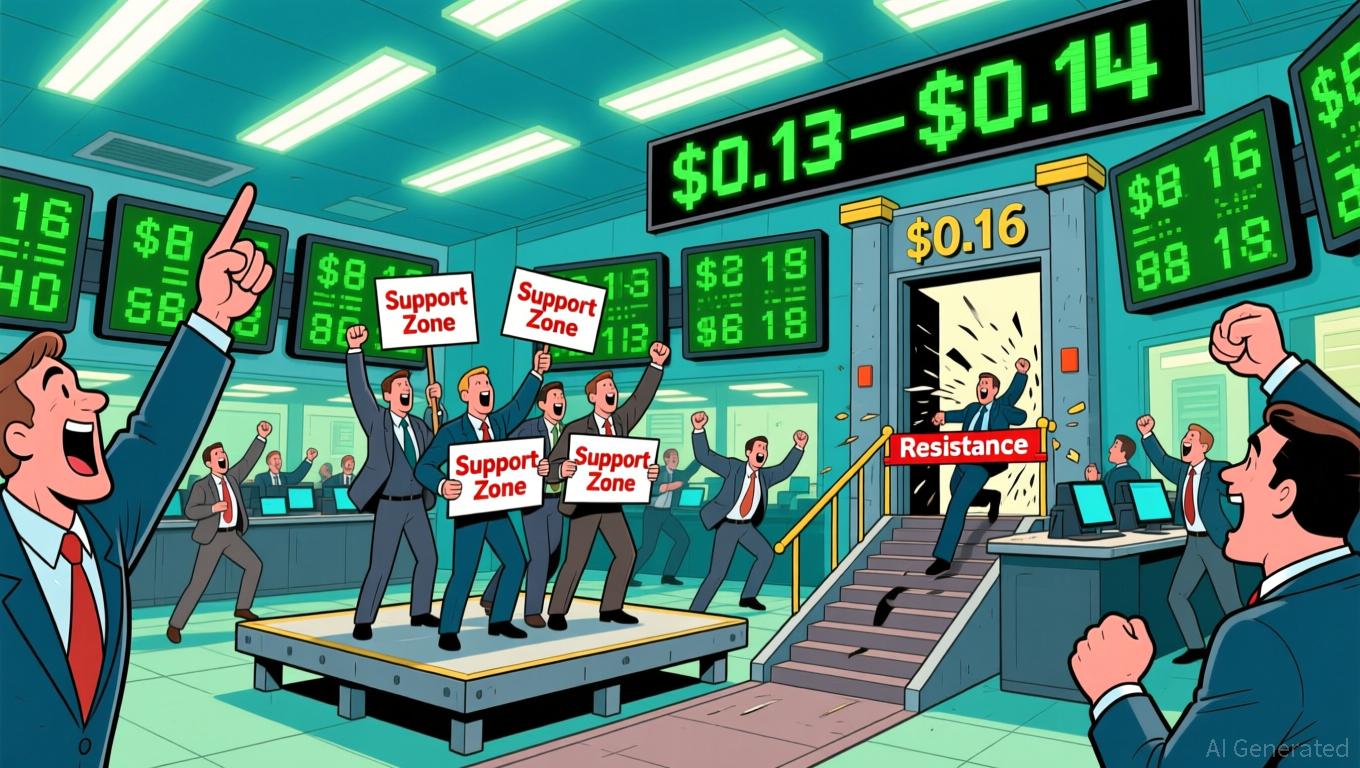The Transformation of Xerox Campus and Webster, NY’s Economic Revival: An Infrastructure-Led Model for Unlocking Value in Industrial Real Estate Markets
- New York's $9.8M FAST NY-funded upgrades transformed Webster's 300-acre Xerox brownfield into a 1M sq ft industrial hub by 2025. - Infrastructure improvements reduced industrial vacancy to 2%, attracting high-tech manufacturers and green energy firms. - The project boosted home prices by 10.1% annually and created 250 jobs via the $650M fairlife® dairy facility. - Public-private partnerships through BOA designation enabled risk-reduced development of contaminated sites. - Webster's model demonstrates inf
Revitalizing the Xerox Campus: A Model for Industrial Land Renewal
The ongoing transformation of the former Xerox campus in Webster, New York, offers a striking example of how targeted infrastructure investments can unlock new value in industrial real estate. Once emblematic of industrial decline, this 300-acre brownfield site is, by 2025, poised to become a vibrant center for economic growth. This turnaround is largely fueled by a $9.8 million infrastructure investment, made possible through New York’s FAST NY grant program. The project, a cornerstone of the broader Reimagine Webster initiative, highlights the powerful synergy between government policy, private investment, and market forces in driving regional economic renewal.
Infrastructure Upgrades Fueling Industrial Growth
At the heart of Webster’s resurgence are comprehensive infrastructure improvements. Upgrades to roads, sewer systems, and energy networks have prepared the site to support over one million square feet of industrial facilities by 2025. These enhancements go beyond basic repairs—they are strategic moves designed to meet state sustainability objectives and appeal to advanced manufacturers, logistics providers, and clean energy companies. As a result, industrial vacancy rates in the region have plummeted to just 2%, signaling strong demand for modern manufacturing and warehousing space in upstate New York.
The site’s advantageous location near the U.S.-Canada border—a vital logistics route—further amplifies its appeal. Its integration with the nearby 600 Ridge Road property, currently undergoing environmental review for mixed-use development, ensures that infrastructure investments are coordinated as part of a larger vision. This holistic planning approach is creating a dynamic, multi-purpose industrial and commercial hub.

Economic Ripple Effects and Real Estate Appreciation
The positive effects of these projects extend well beyond the industrial sector. Webster’s median home prices are expected to climb by 10.1% annually through 2025, fueled by new employment opportunities and improved infrastructure. A major contributor is the $650 million fairlife® dairy plant, which is projected to create 250 jobs and further diversify the local economy. Community-focused enhancements, such as those introduced by the Community Access Project, are also improving walkability and public spaces, making Webster increasingly attractive to both residents and businesses.
Another key factor is the state’s Brownfield Opportunity Area (BOA) designation, which streamlines regulatory hurdles and provides critical resources for redevelopment. This framework has lowered barriers for private investment, reducing risk and encouraging the revitalization of previously neglected or contaminated sites. The success of this public-private partnership model is unlocking new potential across the region.
Shaping the Future of Industrial Land Markets
Webster’s redevelopment reflects a broader shift in how industrial land is valued and utilized. As supply chains become more localized and sustainability becomes a top priority, regions that invest in modern infrastructure—especially on brownfield sites—are gaining a significant edge. The transformation of the Xerox campus illustrates how strategic investments can convert underused industrial land into valuable assets, attracting both capital and skilled workers while advancing goals like decarbonization and regional equity.
For investors, the message is clear: industrial land is evolving from a static asset to a dynamic ecosystem shaped by policy, infrastructure, and innovation. Webster’s experience serves as a roadmap for how these elements can come together to drive not only real estate value but also broader economic prosperity.
Disclaimer: The content of this article solely reflects the author's opinion and does not represent the platform in any capacity. This article is not intended to serve as a reference for making investment decisions.
You may also like
Bitcoin News Update: S&P Rating Drop Highlights Tether’s Risky Asset Holdings and Lack of Transparency
- S&P downgrades Tether's USDT to "5 (weak)" due to high-risk reserves and transparency gaps. - Tether's 5.6% BTC exposure exceeds overcollateralization margins, risking undercollateralization if prices drop. - CEO dismisses critique as traditional finance bias, claiming no "toxic" assets in reserves. - Regulators intensify scrutiny as stablecoin centralization risks emerge amid $184B USDT circulation. - S&P urges Tether to reduce risky assets and enhance reserve disclosure to rebuild trust.

Dogecoin Latest Updates: Is a Repeat Performance on the Horizon? Holding $0.15 May Signal a 611% Rally for Dogecoin
- Dogecoin (DOGE) stabilized near $0.15 support, triggering historical 611% rally potential to $1 by 2026. - Grayscale's GDOG ETF and pending Bitwise BWOW ETF mark institutional adoption, though initial inflows remain muted. - Technical indicators show mixed momentum with RSI near oversold levels and key resistance at $0.16. - Market remains divided as ETF-driven liquidity and on-chain infrastructure contrast with macroeconomic and regulatory risks.

Turkmenistan’s Approach to Cryptocurrency: Centralized Oversight Amidst a Decentralized Age
- Turkmenistan legalizes crypto trading under strict 2026 regulations, granting state control over exchanges, mining , and custodial services. - Law mandates KYC/AML compliance, bans traditional banks from crypto services, and classifies digital assets into "backed" and "unbacked" categories. - Central bank gains authority to operate state-monitored distributed ledgers, contrasting with decentralized approaches in South Korea and Bhutan. - Framework aims to balance innovation with oversight, testing Turkme
Bitcoin News Update: Has $162 Billion Left Crypto Due to Institutional Buying or a Broader Market Pullback?
- BlackRock deposited 4,198 BTC and 43,237 ETH into Coinbase amid crypto sell-offs, despite $355.5M Bitcoin ETF outflows. - A 1.8M BTC ($162B) overnight exchange withdrawal sparks speculation about institutional accumulation or portfolio rebalancing. - $40B in BTC/ETH exchange inflows and record $51.1B Binance stablecoin reserves highlight institutional demand for regulated crypto products. - On-chain data shows 45% of large deposits (≥100 BTC) and 1.8M BTC withdrawals, indicating mixed market sentiment ah
